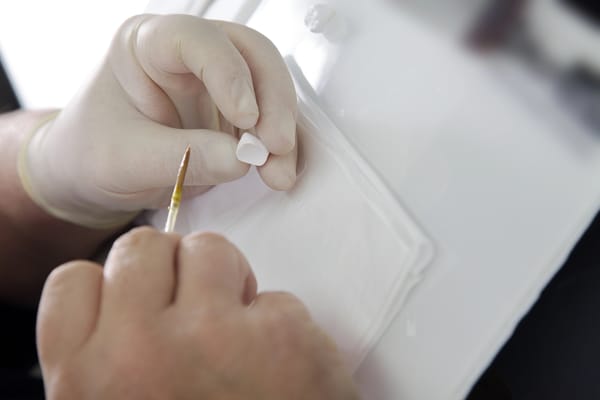
Root canal therapy is often viewed with apprehension, yet it remains a crucial dental treatment for saving teeth that might otherwise need to be removed. One common question that arises following this procedure is the need for a dental crown. Dental crowns play a significant role in not only restoring the tooth’s function but also ensuring its longevity. In this blog post, we will explore the relationship between root canal treatments and dental crowns, shedding light on when and why crowns are recommended. By understanding these aspects, you can make informed decisions about your dental health and approach your treatment with confidence.
Do You Always Need a Dental Crown After Root Canal Procedures?
Not every root canal treatment concludes with the placement of a dental crown, but it is a common outcome. The necessity of a crown largely depends on the location of the tooth and the extent of the damage it has sustained.
Teeth at the back of the mouth, like molars and premolars, typically require crowns because these teeth endure the brunt of chewing and need more support after a root canal. Conversely, front teeth, which are not subjected to as much mechanical stress, might not always need a crown if the structure remains largely intact.
The decision depends on your remaining tooth structure. If your tooth has been extensively damaged by decay or injury, it may have little structure left, making a crown essential to protect and restore it. In contrast, a tooth with minimal damage might be suitable for less invasive options, such as a filling or an onlay, which can provide sufficient protection without the need for a full crown.
Do Dentists Typically Recommend Dental Crowns After Root Canals?
Dentists commonly recommend the placement of a dental crown after a root canal, especially for teeth that have undergone extensive treatment. This recommendation is based on the need to protect the weakened tooth from further stress and potential fracture. After a root canal, a tooth is more brittle since the removal of nerves and blood supply, which nourishes the tooth, makes it less resilient.
The consensus among dental professionals is that crowning a tooth after a root canal increases the tooth’s lifespan and decreases the likelihood of future dental complications. Studies have shown that teeth with crowns are significantly more likely to survive long-term than those restored with simple fillings. This is particularly true for molars and premolars, which are subjected to significant forces during chewing.
For teeth where aesthetics and function are paramount, such as front teeth, dentists carefully weigh the options. If the structural integrity of the tooth allows, a more conservative approach might be adopted.
However, even in these cases, if the tooth has been extensively restored or is at risk of fracture, a crown may still be recommended to ensure durability and aesthetic continuity.
What Are Dental Crowns?
Dental crowns are custom-fitted coverings placed over a tooth to restore its shape, strength, appearance, and size. Crowns are typically recommended when a tooth is significantly weakened, either due to decay, injury, or following a root canal. They help in reinforcing the tooth, ensuring it can withstand the rigors of daily use.
The materials used for crowns vary and include porcelain, ceramic, metal alloys, and composite resin. Each material has its benefits and is chosen based on the tooth’s location, the patient’s bite, aesthetic considerations, and cost factors. Porcelain and ceramic crowns are popular for their ability to mimic the natural color and texture of teeth, making them a preferred choice for front teeth. Metal alloys, often stronger and more durable, are usually used for back teeth where the forces of chewing are greatest.
By completely encasing the tooth, crowns protect it from further damage and decay, and restore its functionality, which is crucial for maintaining overall oral health.
What Should You Do to Protect Your Teeth When Waiting for a Crown After a Root Canal?
After a root canal, it’s crucial to take steps to protect the treated tooth until a permanent crown is placed. Here are some key practices to follow:
- Avoid Chewing on the Affected Side – Until the crown is fitted, it’s wise to avoid chewing on the side of the mouth where the treated tooth is located. This helps prevent putting pressure on the weakened tooth, reducing the risk of breaking.
- Maintain Good Oral Hygiene – Keep the area around the treated tooth clean to prevent infection. Brush gently but thoroughly, using a soft-bristled toothbrush and non-abrasive toothpaste. Don’t forget to floss carefully to avoid dislodging any temporary filling material.
- Use a Temporary Crown if Recommended – If your dentist provides a temporary crown, make sure it stays in place. Avoid sticky or hard foods that might pull off or crack the crown. If the temporary crown comes loose or falls out, contact your dentist immediately to have it replaced or re-secured.
- Attend Follow-Up Appointments – Ensure you attend all scheduled appointments so your dentist can monitor the progress and fit the permanent crown as planned. Delaying this step can increase the risk of further damage to the tooth.
- Avoid Extreme Temperatures – Sensitivity to hot and cold temperatures can occur after a root canal. It’s best to avoid extremely hot or cold foods and beverages to prevent discomfort and potential damage to the temporary restoration.

Contact Walbridge Dental
Are you missing one or more teeth? We can help! The professionals at Walbridge Dental provide complete family dental care to families in the Millbury community. Contact us online to set up an appointment now or call us at 419-836-1033.
Connect on Social Media!
